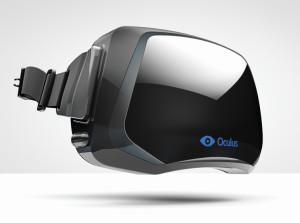 Virtual Reality sometimes seems like one of those technologies that just sound too futuristic to be fully adopted in my lifetime, like flying cars or jetpacks it just seemed too advanced to be something that I’ll ever realistically experience. Of course I followed the development of things like Samsung Gear VR, Oculus Rift and HTC’s Vive with wide-eyed wonder, and I’ve even used Google Cardboard. Naturally, while still incredible, current VR tech doesn’t match up to the expectations of the future that I was always promised, but I keep telling myself that we’re only at the beginning. Much like a kid on Christmas Eve who tells himself that he probably won’t get that Xbox One in the morning, I may just be bracing myself for disappointment just in case. But I must admit, it’s getting hard to deny that Virtual Reality is coming, and it’s coming much faster than any of us expected.
Virtual Reality sometimes seems like one of those technologies that just sound too futuristic to be fully adopted in my lifetime, like flying cars or jetpacks it just seemed too advanced to be something that I’ll ever realistically experience. Of course I followed the development of things like Samsung Gear VR, Oculus Rift and HTC’s Vive with wide-eyed wonder, and I’ve even used Google Cardboard. Naturally, while still incredible, current VR tech doesn’t match up to the expectations of the future that I was always promised, but I keep telling myself that we’re only at the beginning. Much like a kid on Christmas Eve who tells himself that he probably won’t get that Xbox One in the morning, I may just be bracing myself for disappointment just in case. But I must admit, it’s getting hard to deny that Virtual Reality is coming, and it’s coming much faster than any of us expected.
When it comes to emergent technology there has always been a truism that I’ve found to be exceptionally accurate. The minute the pornography industry finds a use for a new technology (link NSFW) then that technology has arrived. Based on the future of VR pornograpy alone it’s clear there is an undeniable validity to the technology. But for something like VR it is going to need to be more than an expensive sex toy to join the TV and the internet enabled device as something everyone has in their home. I think the new litmus test for tech viability is how can it be integrated into the social media experience. There is a reason that Facebook purchased what at the time was considered a video game peripheral, the Oculus Rift, and it isn’t because they are getting into the gaming business.
Virtual social media is going to allow users to access their friends, family, contacts and fans in ways that are going to change the way that we communicate forever, and that really isn’t something that may happen in a decade or two, it’s already happening. One of the biggest sources of buzz at this year’s Consumer Electronic Show in Las Vegas was the debut of vTime, the world’s first mobile virtual reality social network. Developed by Liverpool, England-based Starship Group, vTime is a social network that can be accessed with a VR headset on just about any mobile enabled device including laptops, smartphones, tablets and even gaming consoles by downloading the free vTime mobile app or logging into the web portal.
The vTime network has users set up an avatar that they customize when they setup their account, and it can look as little or as much like themselves as they like. The menu interface and virtual world navigation are controlled by head movements while communication is entirely speech-based. Once the user has entered vTime, they can find friends to talk to, have group chats, explore and experience virtual worlds together and even share and view images and videos together. But don’t be fooled into thinking that vTech is only for chatting with friends and sharing cat videos, the technology has a huge, open world “hub” that anyone can enter and navigate through. They can start random conversations with strangers (which is certain to be fun for anyone with a female avatar) and join groups discussing specific topics or trending news.
- Orbit meeting space.
- Cave meeting space.
- Virtual business meeting.
Businesses are also going to be able to set up virtual business meetings where they can share information and data as easily as they would share a picture on their Facebook profile. vTime also has an integrated tool that will read Excel spreadsheets and convert them into 3D models, graphs and charts. And if a user doesn’t have a VR headset they can still join in with a webcam. Beyond that, it’s easy to see endless uses for vTime, including things like counseling, lawyers offering clients legal consultations, one-on-one life coaching or dating advice, and even fans being able to virtually “meet” celebrities. Not to mention the uses for people in long-distance relationships or overseas in the military or at college.
Here is some video of the vTime interface:
‘We’ve already got people using it for business meetings. It’s even being used for long-distance relationships, weirdly. There was a boy who got his girlfriend a Gear VR for Christmas so they could spend time together,” head of communications at Starship Group Vicky Roberts told the Daily Mail.
Even in the development and early beta phase, vTime already has thousands of users and as more and more VR devices start rolling out in the next few years the population is only going to explode. The VR social media network can already be accessed by anyone who owns a Samsung Gear VR headset. Starship Group will be adding functionality with the Google Cardboard in a few weeks, and it is expected to be accessible with with Facebook’s Oculus Rift VR headset.
While avatars currently are stationary and can’t move around or use their hands to interact with each other, they can send off emojis or offer friends a thumbs up or a thumbs down. But these are early days in the development phase, and Starship Group expects features to expand as interactive VR devices like motion control and haptic feedback devices begin to be developed. Back in the 1980s telephone giant AT&T urged their users to metaphorically ‘reach out and touch someone.’ In a few years, that classic advertising slogan is going to be taking on a whole new meaning. Will you be joining this new social network? Let us now in the vTime forum thread on 3DPB.com.
Subscribe to Our Email Newsletter
Stay up-to-date on all the latest news from the 3D printing industry and receive information and offers from third party vendors.
You May Also Like
3D Printing Unpeeled: New Arkema Material for HP, Saddle and Macro MEMS
A new Arkema material for MJF is said to reduce costs per part by up to 25% and have an 85% reusability ratio. HP 3D HR PA 12 S has been...
3D Printing News Briefs, January 20, 2024: FDM, LPBF, Underwater 3D Printer, Racing, & More
We’re starting off with a process certification in today’s 3D Printing News Briefs, and then moving on to research about solute trapping, laser powder bed fusion, and then moving on...
3D Printing Webinar and Event Roundup: December 3, 2023
We’ve got plenty of events and webinars coming up for you this week! Quickparts is having a Manufacturing Roadshow, America Makes is holding a Member Town Hall, Stratafest makes two...
Formnext 2023 Day Three: Slam Dunk
I’m high—high on trade show. I’ve met numerous new faces and reconnected with old friends, creating an absolutely wonderful atmosphere. The excitement is palpable over several emerging developments. The high...





































